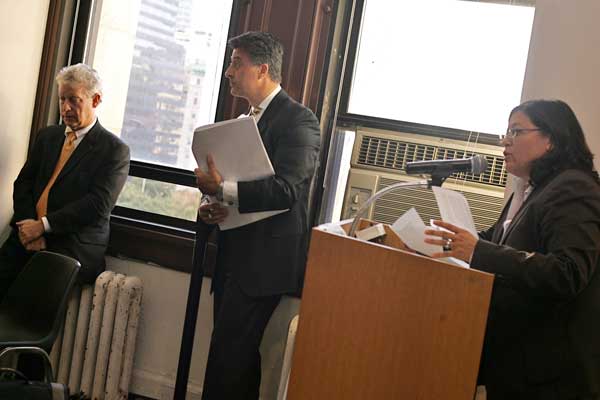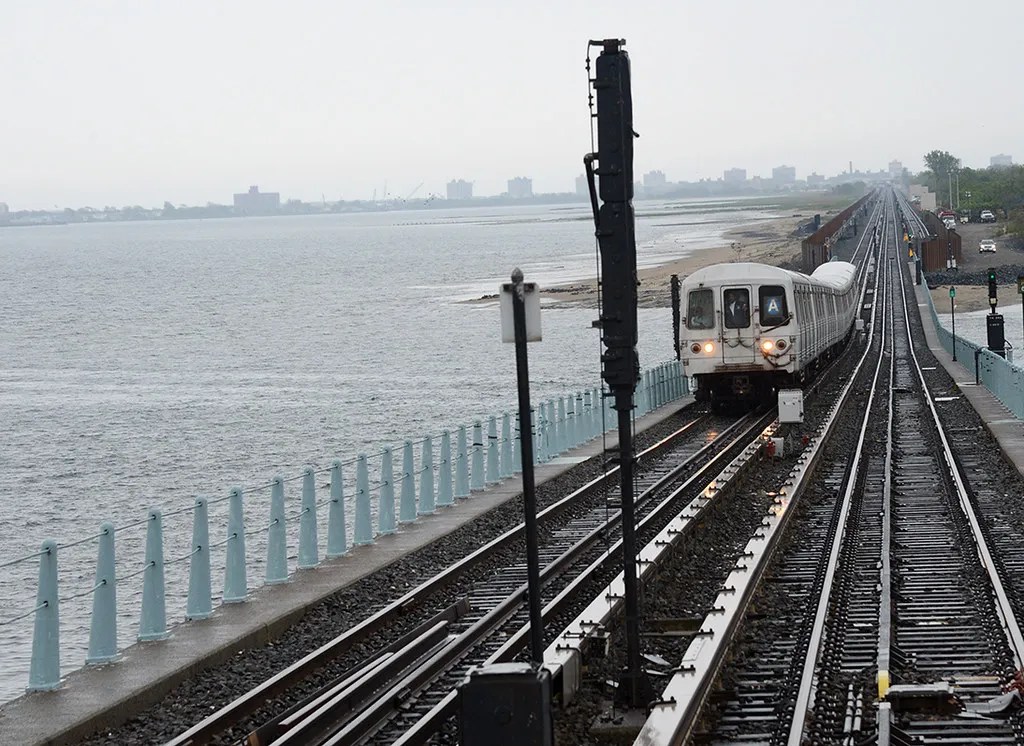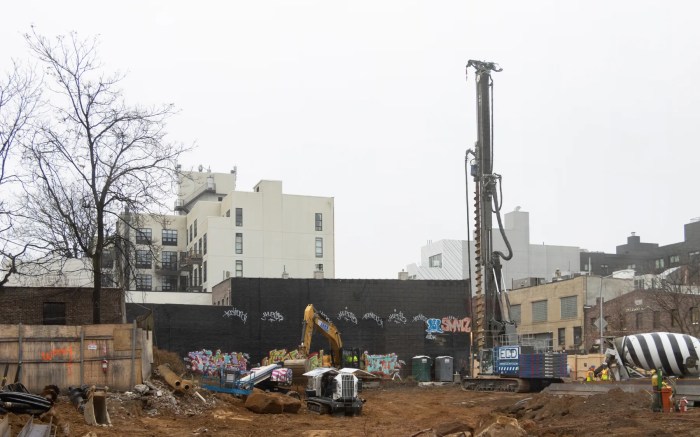
BY SAM SPOKONY | Nearly 100 people packed into the Landmarks Preservation Commission’s public hearing on Tuesday afternoon to rally against a proposal to build a nine-story hotel next to the landmarked Merchant’s House Museum on E. Fourth St.
Dozens of the museum’s supporters, including City Councilmember Rosie Mendez, representatives of the Merchant’s House, architectural experts and preservation advocates, stepped up to a podium and gave testimonials on behalf of their cause. Meanwhile, Gary Spindler — the owner of the proposed hotel site and a partner in its development — scoffed and snickered at some of their words from his seat several feet away.
“The Merchant’s House is more than just a building,” Mendez told the commission members. “It’s so important, in fact, that [the buildings] that go on either side of it are equally important.”
Opponents of plans for constructing the hotel at 27 E. Fourth St. — which would first involve the demolition of a small garage currently on that lot — have continued to push two main arguments ever since the idea was presented to the community in May.
First and foremost, they say, the demolition of the adjacent garage and subsequent construction of the hotel would present an unacceptably grave risk to structural integrity and interior design elements of the Merchant’s House, which has remained virtually untouched since it was built in 1832.
Second, they claim that the black, steel-and-glass exterior of the hotel, along with its relatively towering size — the Merchant’s House, which sits at 29 E. Fourth St., is only three-and-a-half stories tall — would be an inappropriate addition to the block.
“It would irrevocably alter the experience of the visiting public,” said Pi Gardiner, the museum’s executive director. “27 E. Fourth St. was specifically included in the Noho Historic District Extension to protect this portion of the street from future and potentially unrestricted development. A nine-story building butting up against the Merchant’s House, so grossly out of scale with it, would brutally shatter this mid-19th-century vision.”
The lot’s presence within the Noho Historic District Extension is also the reason this particular project requires approval from the L.P.C. before it can go forward.
Citing a resolution passed by Community Board 2 in May, many of those who spoke at the hearing asserted that, if the L.P.C. were to approve the proposal, it should at least limit the hotel’s height to four stories.
Another point repeated throughout the hearing was one first mentioned by Mendez in her testimonial — that the proposal should not be approved without a formal amendment to the developers’ plan that would require them to pay for any and all damages to the Merchant’s House caused by their project.
Although Spindler did not speak during the hearing, which lasted several hours, two members of his design team — Ed Carroll of SRA Architects, which is leading the project, and Phil Murray, a structural engineer — gave a presentation seemingly geared to assuage the activists’ concerns.
Carroll claimed that the hotel would indeed blend in appropriately and would “have an opportunity to be a part of the urban landscape of the area,” because its height would be equal to or less than some other existing buildings nearby. But in doing so he often referred to the surrounding area as a whole, rather than the m museum’s E. Fourth St. block, which opposing architects say requires a more precise approach.
“[The hotel project] displays a complete misunderstanding of what Noho is, and particularly of the eastern portion of the block on E. Fourth St., which is low-rise residential and has been since the 19th century,” said architect Alexander Neratoff, who has consulted for the Merchant’s House and done work on its neighbor at 25 E. Fourth St. “It memorializes this distinction between the high-rise industrial buildings that you see along Lafayette and Broadway and the low-rise, earlier structures that exist along the eastern portion of Noho. To push the boundary of the high-rise buildings over closer to the Merchant’s House is completely contrary to what the whole concept of a historic designation is.”
Murray, in his portion of the developers’ presentation, said that seismographs and other monitoring equipment would be used during both the project’s demolition and construction phases, in order to minimize negative impact. In addition, he said that the foundation work would be done in a piece-by-piece fashion, rather than all at once.
When asked by an L.P.C. member whether the construction would cause damage to the adjacent structures, Murray stated that he believed that the level of damage would be “minimal.”
But in a testimonial later in the meeting, ornamental plasterer David Flaherty disagreed.
“The plaster work in the Merchant’s House is the absolute best that survives in the city, and it’s my guess that [if the hotel is constructed], you’re going to see more damage to it than you did in the 1980s,” said Flaherty, who has done plaster work for the White House and the U.S. State Department, and has authored a book on the subject.
He was referring to the demolition of 31 E. Fourth St. in 1988, which caused nearly $1 million dollars worth of structural damage to the Merchant’s House and forced the museum to close for two years.
The L.P.C. made no explicit comments on the developers’ presentation, and has not yet set a date for its decision on whether or not to approve the developers’ proposal.
Of course, not everyone who came to support the Merchant’s House Museum, which authentically displays the domestic lifestyle of a wealthy 19th-century family, was an architectural expert.
Philip Scandura, a retired high school history teacher who has been a tour guide at the Merchant’s House for the past 12 years, attended simply because he loves the building, and is worried about its survival.
While waiting in the hallway before the L.P.C. hearing began, he recalled taking his students on walking tours through that neighborhood during his 30-year tenure at Stuyvesant High School.
“I would take them first to the Tenement Museum, and then we would go up to the Merchant’s House in order to see the contrasts that existed within 19th-century social life,” Scandura said. “It was fantastic.”



































